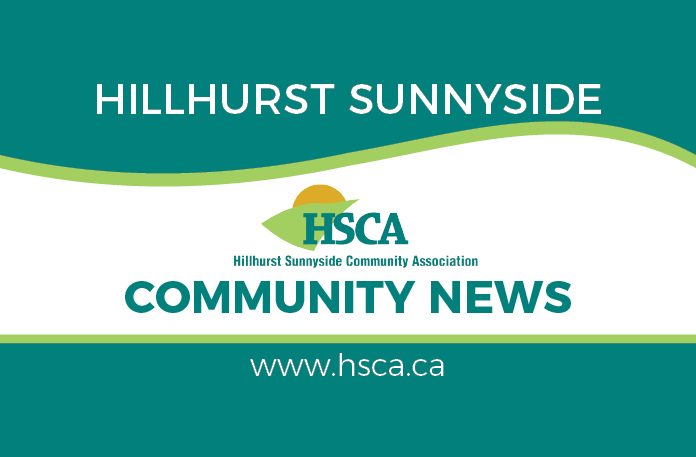This is an excerpt from the Hillhurst Sunnyside Historical Context paper, ‘Early Commerce & Industry’ section (pp.28-38). For more on the history of our neighborhood, check out the full paper: https://www.hsca.ca/historical-context-paper.
Hillhurst-Sunnyside’s streetcar system was one of the earliest to develop – from 1909 – and offered the best service outside the city centre. Part of the rollout of the Calgary Municipal Railway’s first network in 1909, it was the only service north of the Bow. The river crossing selected was the Louise Bridge at 10 Street in favour of Centre Street which had steeper grades49. The streetcars ran across the Louise Bridge along 10 Street to a turn-around near 5 (Victoria) Street at Riley Park; naturally 10 Street saw the community’s first commercial development.
By 1912 the neighbourhood’s service had significantly expanded. In Hillhurst, it expanded west with a loop (the ‘red line’) that ran along 5 Avenue from 10 to 14 Street, along 14 Street to Kensington Road – enabling those two roads to develop commercially after 1912 – and returned to 10 Street. On 10 Street the line also extended further north to 16 Avenue where it accessed areas outside the community to the northeast.
In Sunnyside, a new route was introduced to residential streets along 2, 7, and 6 Avenues, traversing most of the subdivision before reaching a turnaround. In July 1912, Hillhurst was part of the inaugural run of an impressive new 50-passenger scenic car which ran along various scenic routes in the city, including the panoramic Sunnyside Loop. The canvas-covered open car featured bronze gates and varnished seats in elevated tiers.
The neighbourhood’s streetcar service expanded further between 1913 and 1921. In Hillhurst, service on 8 Avenue, 14 Street, and Kensington Road was extended west to interface a loop that accessed the west-most part of Hillhurst, ‘Grand Trunk’, and east Parkdale in 1913. Residents recall the smaller-sized trams (another name for streetcars) employed on this route which they nicknamed the ‘Toonerville Trolley’. Service in Sunnyside was extended by the short distance east required to reach Centre Street (an extension that was discontinued in 1944 due to recurring washouts that year)50. Also in 1921, streetcar service in the community was significantly facilitated by the construction of the new concrete-arch Hillhurst Bridge just east of the Louise Bridge.
As with the rest of the city, the conversion from trams to buses (also called coaches) began taking place in 1946. The first step was a new corporate name that did not include ‘railway’: the Calgary Transit System. The same year, an interim phase began during which streetcars were converted to trolley trams. For a period both the converted trolley trams and trolley coaches were operating in the system, until eventually only trolley coaches remained in the system and the tracks were dug up from roadways. The trolley system was eventually replaced by diesel-powered buses. Electric railways would not return to the community until light rail transit was introduced in 1987.
Sources:
49 Foran (1978); Melnyk (1985).
50 Hatcher (1975).
Click here to the Hillhurst Community News home page for the latest Hillhurst community updates.
Click here to the Sunnyside Community News home page for the latest Sunnyside community updates.









